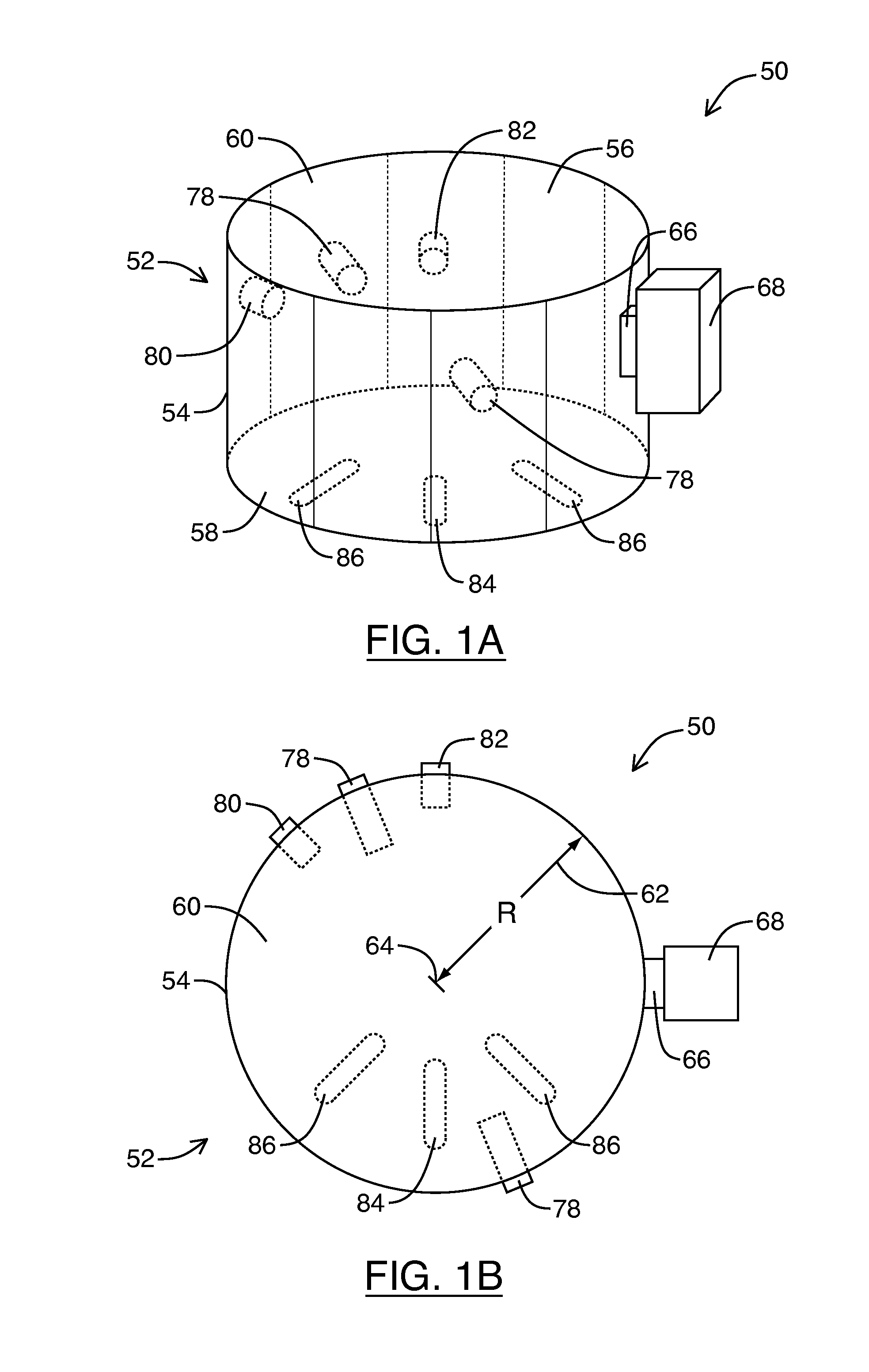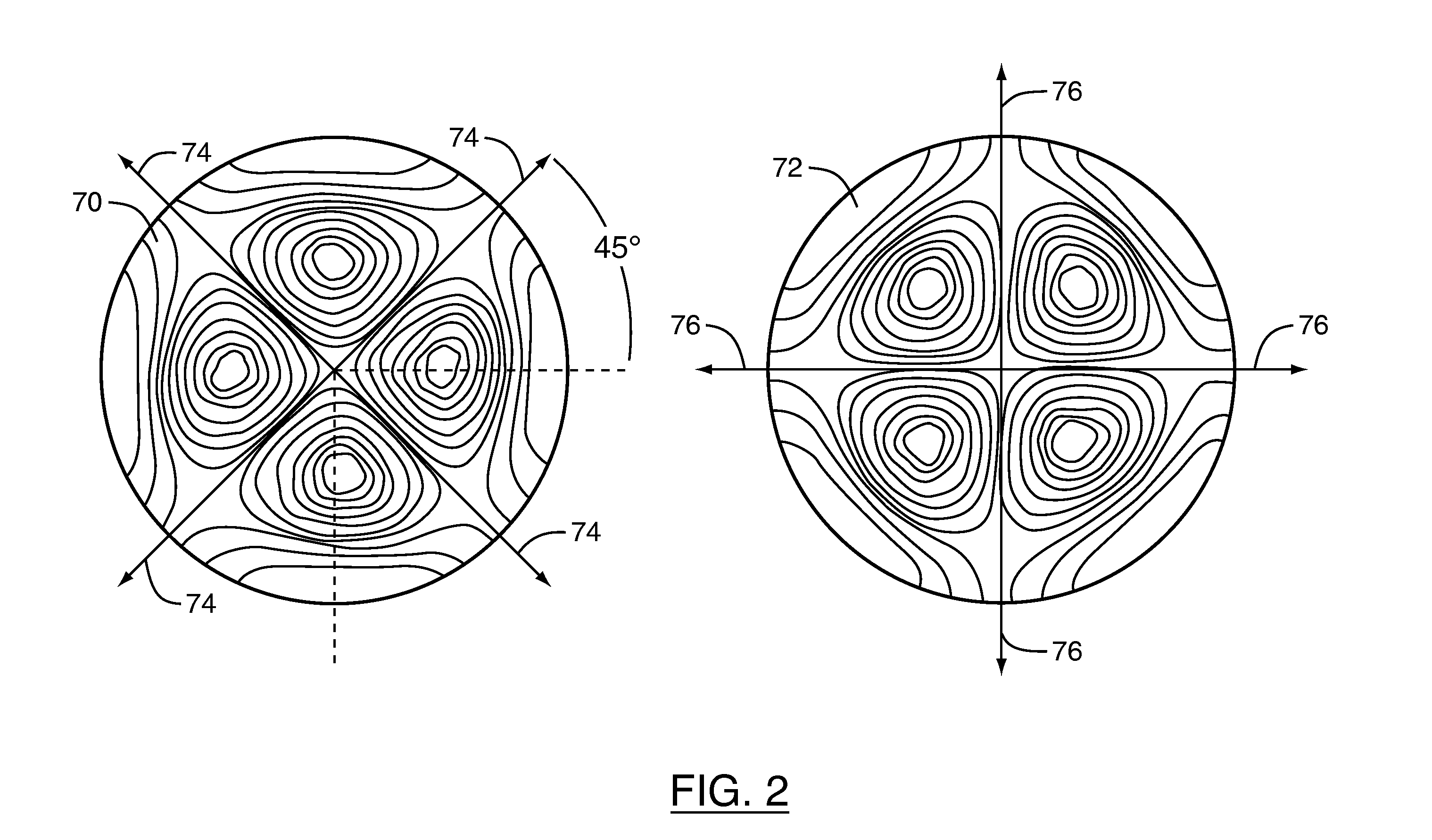Super q dual mode cavity filter assembly
a cavity filter and super q technology, applied in the field of dual-mode microwave resonator filter, can solve the problems of increasing inter-channel distortion, increasing insertion loss, and reducing efficiency
- Summary
- Abstract
- Description
- Claims
- Application Information
AI Technical Summary
Problems solved by technology
Method used
Image
Examples
Embodiment Construction
[0026]Microwave resonator filters are commonly designed to operate in the TE11N or TE011 mode for high Q factor applications because, at lower frequency ranges, such as the C band (4-8 GHz) or the Ku band (12-18 GHz), the TE11N or TE011 modes can offer better performance than other resonance modes. For example, low loss filters having Q factors up to about 16,000 are realizable using the TE11N or TE011 modes. Quality factors up to and exceeding those realizable using the TE11N or TE011 modes of the same or higher order can be also achieved by designing the microwave filter to operate in higher order resonance modes, such as the TE22N mode. However, for microwave filters designed for the C or Ku bands, the realized TE22N mode filter tends to be larger and bulkier as compared to the TE11N or TE011 modes. In certain telecommunications applications, such as satellite or spacecraft installations, where size and weight can be important design constraints, the additional weight and bulk in...
PUM
 Login to View More
Login to View More Abstract
Description
Claims
Application Information
 Login to View More
Login to View More - R&D
- Intellectual Property
- Life Sciences
- Materials
- Tech Scout
- Unparalleled Data Quality
- Higher Quality Content
- 60% Fewer Hallucinations
Browse by: Latest US Patents, China's latest patents, Technical Efficacy Thesaurus, Application Domain, Technology Topic, Popular Technical Reports.
© 2025 PatSnap. All rights reserved.Legal|Privacy policy|Modern Slavery Act Transparency Statement|Sitemap|About US| Contact US: help@patsnap.com



